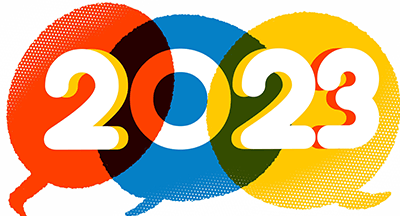
Schools (and vendors) love to tout research-based solutions, processes, and practices. But is “research-based” really all it’s cracked up to be? Let’s explore three examples of contradictions between research and actual classroom practice.
Why does research make us feel confident?
The idea that really smart people agreed on a specific solution is reassuring. Humans like familiarity—knowing there’s a right way, a best practice. The problem is, once research gets some popular demand behind it, a lot of the science gets left by the wayside. Often, researchers are hesitant to prescribe a definitive, black-and-white answer to their findings, but people love to use their results to create rules anyway—whether or not those mandates uphold the researchers’ actual findings. As administrators, professors, and bloggers digest research and convert it into best practices, they might skim off the nuance (at best) or at worst, outright skew the results.
Why do we allow this shift away from sound science to happen? The reasons are numerous:
- Complexity is off-putting. If someone has already done the thinking for us, it’s tempting to simply agree. The solution could sound good on paper but have no effect in classrooms with real kids and teachers.
- Research takes time and skill. Studies can also be expensive, and out of the reach of individual districts.
- We think we know better. The way we’ve always done it is the best way… right? Tradition abounds in K12 schools—but should it always be preserved? It can seem insurmountable to challenge the familiar nature of K12 schools.
- Secondhand interpretations are within easy reach. Problem, meet Google the All-Knowing.
What’s the big deal, anyway?
The risks of accepting popular narrative over proven science might not seem like an outrageous tradeoff. School leaders are busy people who rely on teams and trusted advisors to help them make decisions all day, every day. Still, not all research is created equal: studies can be (and are frequently) bought by businesses to make their case, and evidence can be of low quality and still held up as a divine truth.Poor policy is built on unreliable or slimmed-down research. While generalizations may work out perfectly fine for a large chunk of a school’s population, consider the outliers of the student body. Can we guarantee equity when building policy on second- or third-hand insights? A broader context and consideration for all students matters.
Let’s explore some examples
First, a couple things we do that maybe we shouldn’t.
1) Fight for smaller class sizes in every grade and subject.
If there’s one thing we can all agree on, it’s that smaller class sizes are always better (right?). Fewer active minds gathered together means more personalized attention from teachers. It turns out this adage, while it looks good on paper and seems incredibly logical, might not be the best course of universal action.
Now, this isn’t supporting a polarized counter correction, packing every classroom stadium-style. But specificity can be uncovered in meta-analysis on class sizes (Chingos and Whitehurst, 2011). The researchers identified a “sweet spot” of 7-10 fewer students per class in early grades, which showed long-term effects in some studies in some states. Other similar studies they considered had mixed or negligible results, especially as students progressed into high school.
Now factor in in the considerable expense of legislation mandating small class size, which translates to billions at the state level. When actual measured results fail to live up to the hypothesis, is it time to explore a more nuanced investment of education dollars?
And how did small class sizes become a nearly universal rallying cry for people in schools everywhere? It all dates back to one of the few credible studies on the topic—some really exciting findings in a Tennessee district in 1980 (nearly 40 years ago). Important parts of the study which get forgotten in the retelling include the grades studied (K–3).
VERDICT: Inconclusive
Why do we do it?
- Sounds great on paper
- Popular with people
- Based on a study from the 1980s
- Not all the details and limitations are included in citations
2) Starting school too early
There are three things sleep studies of adolescent youth have told us:
- The amount of recommended sleep (9+ hours)
- The risk factors of not meeting those requirements (physical and mental health struggles, greater risk of illicit drug abuse, and poor performance in school, according to the CDC)
- The number of students who get enough sleep—less than one-third
To dive deeper into the challenge of adolescent sleep, it’s also documented that sleep patterns shift after puberty, giving students about a two-hour window of sleep phase delay. This means a student who was accustomed to going to sleep at 9 p.m. will find themselves unable to sleep until 11 p.m.—and they’ll want to make up that time by sleeping two hours later in the morning. Turns out the lazy teenager stereotype is based on actual biological shifts in circadian rhythm, although it’s important to note the effects of electronic devices on further sleep delay as well.
The wrench in the system? The average start time for middle and high schools nationwide is 8:03 a.m., with some schools starting much earlier. Some schools (notably in Alaska and North Dakota) did follow recommendations to start after 8:30 a.m. to facilitate extra sleep. Schools may be hesitant to adjust start times based on multiple factors including costs, after school activity pushing further into the evening, and staff considerations all based on a traditional early starting time.
VERDICT: Proven
Why do we do it?
- Tradition
- Convenience and inertia
- Bureaucracy impedes changes
- Easy to blame other sleep interruptions
Now, something most schools don’t do that maybe they should.
3) Provide ethnic studies
Even the highest performing schools must find ways to improve. One proven strategy is to ensure ethnic studies curricula is part of just about any subject possible, and especially in language arts. Why? Representation matters. The more students can see themselves as key players in history, the easier it is to imagine themselves creating the future.
The research on this topic tells us ethnic studies works to build empathy and broaden perspectives for students of all backgrounds, including white students and students of color. The key idea tells us it’s not enough to show students of color using the lens of white colonialism—for example, giving primary representation of African-Americans as slaves or representing immigration as a temporary issue limited to a certain time period. To truly represent ethnic studies requires primary accounts from people of color. By doing so, schools can help graduation rates for at-risk students of color skyrocket.
VERDICT: Proven
Why don’t we do it?
- Implicit bias
- Misunderstanding of ethnic studies purpose and goals
These are just three examples of ways research can stand at odds with belief and practice. School leaders work hard to create an environment geared for the best growth possible, and research can help and hinder that pursuit. If there’s a single takeaway from these examples, it’s to keep challenging the status quo and looking for deeper meaning in the processes and routines we may take for granted. Traditions and culture must shift. It only makes sense to make the shift a beneficial one.
Just do your research first.
Follow-up resource: The Consequences of Bad Data
Double-check your data to avoid mistakes like these 3 Examples of Data Gone Wrong.WHAT'S NEXT FOR YOUR EDTECH? The right combo of tools & support retains staff and serves students better. We'd love to help. Visit skyward.com/get-started to learn more.

|
Erin Werra Blogger, Researcher, and Edvocate |
Erin Werra is a content writer and strategist at Skyward’s Advancing K12 blog. Her writing about K12 edtech, data, security, social-emotional learning, and leadership has appeared in THE Journal, District Administration, eSchool News, and more. She enjoys puzzling over details to make K12 edtech info accessible for all. Outside of edtech, she’s waxing poetic about motherhood, personality traits, and self-growth.




